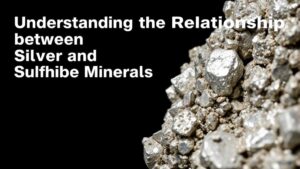Evaluating Old Mining Tailings for Hidden Gold Potential
Evaluating Old Mining Tailings for Hidden Gold Potential
The reevaluation of old mining tailings presents a promising opportunity for discovering additional gold deposits. As mining technologies improve and environmental regulations evolve, previously discarded materials can become a vital resource. This article explores methods for evaluating these tailings, the significance of advanced extraction technologies, and case studies highlighting the hidden potential of gold in tailings.
Understanding Mining Tailings
Mining tailings are the remnants of the ore processing phase, consisting of a mixture of crushed rock and chemical residue. Primarily, these are left behind in tailing piles or ponds after valuable minerals have been extracted, often resulting in significant environmental concerns. Traditionally, these tailings were viewed as waste; however, recent advances in geochemistry and metallurgy have spurred interest in their reevaluation.
Why Reevaluate Old Tailings?
Reasons for reconsidering mining tailings include:
- The advancement of extraction technologies allows for the recovery of previously unrecoverable gold.
- Increased metal prices can make extraction economically feasible.
- Environmental regulations and practices now encourage the responsible mining and processing of waste materials.
Methodologies for Evaluating Tailings
Sampling Techniques
An effective evaluation begins with proper sampling. Representative samples must be collected from various locations within the tailings to ensure accuracy. This often includes:
- Random sampling to eliminate bias.
- Layered sampling to assess the vertical distribution of gold concentrations.
Samples are then analyzed using techniques such as fire assay and inductively coupled plasma mass spectrometry (ICP-MS) to determine gold content and distribution.
Geochemical Analysis
Geochemical analysis plays a crucial role in assessing the potential of old tailings. Elements associated with gold, such as arsenic and copper, can indicate the likelihood of gold presence. This analysis often involves:
- Assessing mineralogy to determine the binding of gold within the tailings.
- Conducting leach tests to assess recoverability.
Environmental Considerations
Reassessing old tailings also entails understanding and managing environmental impacts. Tailings can contain toxic substances, and the process of extraction must align with environmental regulations. Ongoing monitoring of tailings’ chemical stability and potential leaching is essential to prevent environmental degradation.
Case Studies Demonstrating Hidden Gold Potential
The Case of the Idaho Silver Valley
In the Idaho Silver Valley, researchers conducted a successful study of historical tailings, discovering significant amounts of gold previously overlooked. Utilizing modern methods, they managed to extract an estimated 2,500 ounces of gold from 100,000 tons of tailings, showcasing the potential profit in reevaluating waste materials.
South African Gold Mines
Similarly, in South Africa, old mine dumps have been revisited with new technologies. By employing advanced technologies like bioleaching, mining companies recovered thousands of ounces of gold from tailings that were once deemed unprofitable. This not only demonstrates economic viability but also supports sustainable mining practices.
Conclusion and Actionable Takeaways
The evaluation of old mining tailings for hidden gold potential reflects a broader trend in sustainable resource management. With proper methodologies in sampling and analysis, along with advancing technologies, mining companies can unlock previously hidden value in what was once considered waste. Stakeholders should consider the following steps:
- Invest in modern extraction technologies to enhance recovery rates.
- Conduct comprehensive geochemical analyses to identify viable tailings.
- Ensure adherence to environmental regulations to minimize ecological impact.
By adopting these practices, the mining industry can better capitalize on existing tailings, contributing to both economic growth and sustainable resource utilization.



